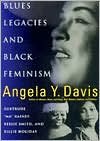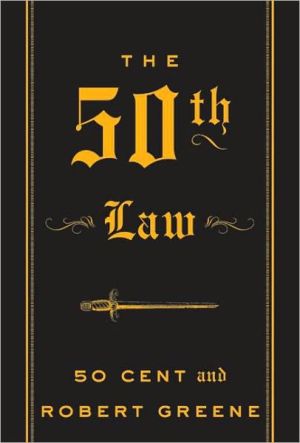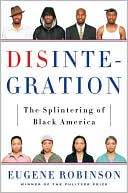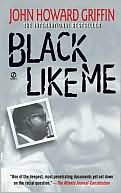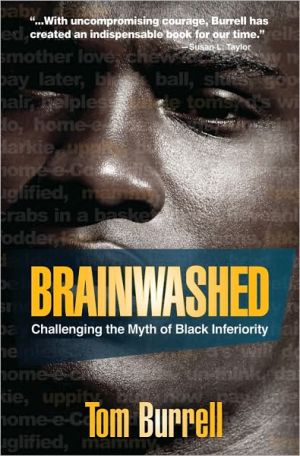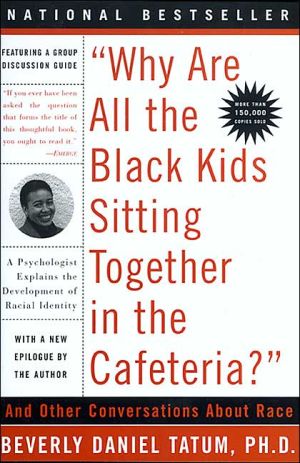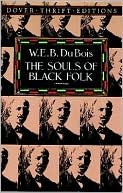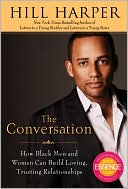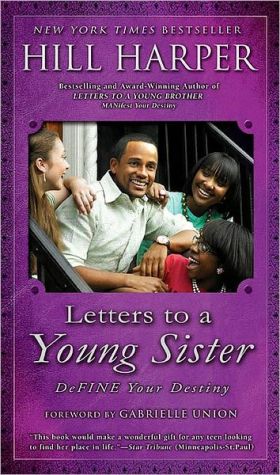Blues Legacies and Black Feminism: Gertrude "Ma" Rainey, Bessie Smith, and Billie Holiday
Jazz, it is widely accepted, is the signal original American contribution to world culture. Angela Davis shows us how the roots of that form in the blues must be viewed not only as a musical tradition but as a life-sustaining vehicle for an alternative black working-class collective memory and social consciousness profoundly at odds with mainstream American middle-class values. And she explains how the tradition of black women blues singers - represented by Gertrude "Ma" Rainey, Bessie Smith,...
Search in google:
Jazz, it is widely accepted, is the signal original American contribution to world culture. Angela Davis shows us how the roots of that form in the blues must be viewed not only as a musical tradition but as a life-sustaining vehicle for an alternative black working-class collective memory and social consciousness profoundly at odds with mainstream American middle-class values. And she explains how the tradition of black women blues singers - represented by Gertrude "Ma" Rainey, Bessie Smith, and Billie Holiday - embodies not only an artistic triumph and aesthetic dominance over a hostile popular music industry but an unacknowledged proto-feminist consciousness within working-class black communities. Through a close and riveting analysis of these artists' performances, words, and lives, Davis uncovers the unmistakable assertion and uncompromising celebration of non-middle-class, non-heterosexual social, moral, and sexual values.Publishers WeeklyIn her provocative book, Davis, the well-known sixties radical, professor and author (Women, Culture, and Politics; Women, Race, and Class) finds, in the work of three pivotal artists of the blues and jazz era, "rich terrain for examining a historical feminist consciousness that reflected the lives of working-class black communities." Through her close readings of their lyrics, which she transcribed (and presents as the book's second half), Davis explores the meanings behind the performances of Gertrude "Ma" Rainey and Bessie Smith. Toppling the prevailing image of the tragic blues woman, she finds that the songs don't portray the desolate and deserted woman; rather, "the most frequent stance assumed by the women in these songs is independence and assertivenessindeed defiancebordering on and sometimes erupting into violence." She also offers ample evidence to dispute claims that women's blues were personal, not political, arguing that their songs created consciousness by naming the issues. Her readings of Billie Holiday's lyrics are less successful, perhaps because it is difficult to capture in words Holiday's subversive renderings of popular love songs. Still, Davis's book should be read by both scholars and music aficionados for its expressive reading of these singers' complex works.
I USED TO BE YOUR SWEET MAMA\ Ideology, Sexuality, and Domesticity\ \ \ Like most forms of popular music, African-American blues lyrics talk about love. What is distinctive about the blues, however, particularly in relation to other American popular musical forms of the 1920s and 1930s. is their intellectual independence and representational freedom. One of the most obvious ways in which blues lyrics deviated from that era's established popular musical culture was their provocative and pervasive sexual--including homosexual--imagery.\ By contrast, the popular song formulas of the period demanded saccharine and idealized nonsexual depictions of heterosexual love relationships. Those aspects of lived love relationships that were not compatible with the dominant, etherealized ideology of love--such as extramarital relationships, domestic violence, and the ephemerality of many sexual partnerships--were largely banished from the established popular musical culture. Yet these very themes pervade the blues. What is even more striking is the fact that initially the professional performers of this music--the most widely heard individual purveyors of the blues--were women. Bessie Smith earned the title "Empress of the Blues" not least through the sale of three-quarters of a million copies of her first record.\ The historical context within which the blues developed a tradition of openly addressing both female and male sexuality reveals an ideological framework that was specifically African-American. Emerging during the decades following the abolition of slavery, the blues gave musical expression to the new social and sexual realities encountered by African Americans as free women and men. The former slaves' economic status had not undergone a radical transformation--they were no less impoverished than they had been during slavery. It was the status of their personal relationships that was revolutionalized. For the first time in the history of the African presence in North America, masses of black women and men were in a position to make autonomous decisions regarding the sexual partnerships into which they entered. Sexuality thus was one of the most tangible domains in which emancipation was acted upon and through which its meanings were expressed. Sovereignty in sexual matters marked an important divide between life during slavery and life after emancipation.\ Themes of individual sexual love rarely appear in the musical forms produced during slavery. Whatever the reasons for this--and it may have been due to the slave system's economic management of procreation, which did not tolerate and often severely punished the public exhibition of self-initiated sexual relationships--I am interested here in the disparity between the individualistic, "private" nature of sexuality and the collective forms and nature of the music that was produced and performed during slavery. Sexuality after emancipation could not be adequately expressed or addressed through the musical forms existing under slavery. The spirituals and the work songs confirm that the individual concerns of black people expressed through music during slavery centered on a collective desire for an end to the system that enslaved them. This does not mean there was an absence of sexual meanings in the music produced by African-American slaves. It means that slave music--both religious and secular--was quintessentially collective music. It was collectively performed and it gave expression to the community's yearning for freedom.\ The blues, on the other hand, the predominant postslavery African-American musical form, articulated a new valuation of individual emotional needs and desires. The birth of the blues was aesthetic evidence of new psychosocial realities within the black population. This music was presented by individuals singing alone, accompanying themselves on such instruments as the banjo or guitar. The blues therefore marked the advent of a popular culture of performance, with the borders of performer and audience becoming increasingly differentiated. Through the emergence of the professional blues singer--a predominantly female figure accompanied by small and large instrumental ensembles--as part of the rise of the black entertainment industry, this individualized mode of presenting popular music crystallized into a performance culture that has had an enduring influence on African-American music.\ The spirituals, as they survived and were transformed during the postslavery era, were both intensely religious and the aesthetic bearers of the slaves' collective aspirations for worldly freedom. Under changed historical circumstances in which former slaves had closer contact with the religious practices and ideologies of the dominant culture, sacred music began to be increasingly enclosed within institutionalized religious spaces. Slave religious practices were inseparable from other aspects of everyday life--work, family sabotage, escape. Postslavery religion gradually lost some of this fluidity and came to be dependent on the church. As sacred music evolved from spirituals to gospel, it increasingly concentrated on the hereafter. Historian Lawrence Levine characterizes the nature of this development succinctly. "The overriding thrust of the gospel songs," he writes,\ The blues rose to become the most prominent secular genre in early twentieth-century black American music. As it came to displace sacred music in the everyday lives of black people, it both reflected and helped to construct a new black consciousness. This consciousness interpreted God as the opposite of the Devil, religion as the not-secular, and the secular as largely sexual. With the blues came the designations "God's music" and "the Devil's music." The former was performed in church--although it could also accompany work--while the latter was performed in jook joints. circuses, and traveling shows. Despite the new salience of this binary opposition in the everyday lives of black people, it is important to underscore the close relationship between the old music and the new. The new music had old roots, and the old music reflected a new ideological grounding of black religion. Both were deeply rooted in a shared history and culture.\ God and the Devil had cohabited the same universe during slavery, not as polar opposites but rather as complex characters who had different powers and who both entered into relationships with human beings. They also sometimes engaged with each other on fairly equal terms. As Henry Louis Gates. Jr., and others have argued, the Devil was often associated with the trickster orisha Legba, or Elegua. in Yoruba religions. Some of the folktales Zora Neale Hurston presents in Mules and Men portray the Devil not as evil incarnate but as a character with whom it was possible to identify in humorous situations.\ In describing the religious household in which she was reared, veteran blues woman Ida Goodson emphasizes that the blues were banned from her childhood home. Nevertheless, she and her playmates often played and sang the blues when her parents were away. On those occasions when her parents showed up unexpectedly, they easily made the transition to gospel music without missing a beat:\ As if reconciling the two positions--that of herself as a young musician and that of her religious parents--Goodson later explains that "the Devil got his work and God got his work."\ During slavery, the sacred universe was virtually all-embracing. Spirituals helped to construct community among the slaves and infused this imagined community with hope for a better life. They retold Old Testament narratives about the Hebrew people's struggle against Pharaoh's oppression, and thereby established a community narrative of African people enslaved in North America that simultaneously transcended the slave system and encouraged its abolition. Under the conditions of U.S. slavery, the sacred--and especially sacred music--was an important means of preserving African cultural memory. Karl Marx's comments on religion as the "opium of the people" notwithstanding, the spirituals attest to the fact that religious consciousness can itself play a transformative role. As Sojourner Truth and other abolitionists demonstrated--as well as insurrectionary leaders Nat Turner, Denmark Vesey, and the Underground Railroad conductor Harriet Tubman--religion was far more than Marx's "illusory sun." Spirituals were embedded in and gave expression to a powerful yearning for freedom. Religion was indeed, in Marx's words, the "soul" of "soulless conditions."\ The spirituals articulated the hopes of black slaves in religious terms. In the vast disappointment that followed emancipation--when economic and political liberation must have seemed more unattainable than ever--blues created a discourse that represented freedom in more immediate and accessible terms. While the material conditions for the freedom about which the slaves had sung in their spirituals seemed no closer after slavery than they had seemed before, there were nevertheless distinct differences between the slaves' personal status under slavery and during the post-Civil War period. In three major respects, emancipation radically transformed their personal lives: (1) there was no longer a proscription on free individual travel; (2) education was now a realizable goal for individual men and women; (3) sexuality could be explored freely by individuals who now could enter into autonomously chosen personal relationships. The new blues consciousness was shaped by and gave expression to at least two of these three transformations: travel and sexuality. In both male and female blues, travel and sexuality are ubiquitous themes, handled both separately and together. But what finally is most striking is the way the blues registered sexuality as a tangible expression of freedom: it was this dimension that most profoundly marked and defined the secularity of the blues.\ Theologian James Cone offers the following definition of the blues, agreeing with C. Eric Lincoln's succinct characterization of them as "secular spirituals." Cone writes:\ It is not necessary to accede to Cone's essentialist invocation of a single metaphysical "truth" of black experience to gain from his description a key insight into why the blues were condemned as the Devil's music: it was because they drew upon and incorporated sacred consciousness and thereby posed a serious threat to religious attitudes.\ Levine emphasizes the blurring of the sacred and the secular in both gospel music and the blues. It may not have been the secularity of the blues that produced such castigation by the church, he argues, but rather precisely their sacred nature. He writes:\ Although both Cone and Levine make references to Mamie Smith, Ma Rainey, Bessie Smith, and other women who composed and performed blues songs, they, like most scholars, tend to view women as marginal to the production of the blues. Note that in the passage quoted above, Levine refers quite explicitly to the "spokesmen" of the blues. With the simple substitution of "spokeswomen," his argument would become more compelling and more revealing of the new religious consciousness about which he writes.\ Blues practices, as Levine asserts, did tend to appropriate previously religious channels of expression, and this appropriation was associated with women's voices. Women summoned sacred responses to their messages about sexuality. During this period, religious consciousness came increasingly under the control of institutionalized churches, and male dominance over the religious process came to be taken for granted. At the same time that male ministers were becoming a professional caste, women blues singers were performing as professional artists and attracting large audiences at revivals-like gatherings. Gertrude "Ma" Rainey and Bessie Smith were the most widely known of these women. They preached about sexual love, and in so doing they articulated a collective experience of freedom, giving voice to the most powerful evidence there was for many black people that slavery no longer existed.\ The expression of socially unfulfilled dreams in the language and imagery of individual sexual love is, of course, not peculiar to the African-American experience. As part of the capitalist schism between the public and private realms within European-derived American popular culture, however, themes of romantic love had quite different ideological implications from themes of sexuality within postslavery African-American cultural expression. In the context of the consolidation of industrial capitalism, the sphere of personal love and domestic life in mainstream American culture came to be increasingly idealized as the arena in which happiness was to be sought. This held a special significance for women, since love and domesticity were supposed to constitute the outermost limits of their lives. Full membership in the public community was the exclusive domain of men. Therefore, European-American popular songs have to be interpreted within this context and as contributing to patriarchal hegemony.\ The blues did not entirely escape the influences that shaped the role of romantic love in the popular songs of the dominant culture. Nevertheless, the incorporation of personal relationships into the blues has its own historical meanings and social and political resonances. Love was not represented as an idealized realm to which unfulfilled dreams of happiness were relegated. The historical African-American vision of individual sexual love linked it inextricably with possibilities of social freedom in the economic and political realms. Unfreedom during slavery involved, among other things, a prohibition of freely chosen, enduring family relationships. Because slaves were legally defined as commodities, women of childbearing age were valued in accordance with their breeding potential and were often forced to copulate with men--viewed as "bucks"--chosen by their owners for the sole purpose of producing valuable progeny. Moreover, direct sexual exploitation of African women by their white masters was a constant feature of slavery. What tenuous permanence in familial relationships the slaves did manage to construct was always subject to the whim of their masters and the potential profits to be reaped from sale. The suffering caused by forced ruptures of slave families has been abundantly documented.\ Given this context, it is understandable that the personal and sexual dimensions of freedom acquired an expansive importance, especially since the economic and political components of freedom were largely denied to black people in the aftermath of slavery. The focus on sexual love in blues music was thus quite different in meaning from the prevailing idealization of romantic love in mainstream popular music. For recently emancipated slaves, freely chosen sexual love became a mediator between historical disappointment and the new social realities of an evolving African-American community. Ralph Ellison alludes to this dimension of the blues. I think, when he notes "their mysteriousness ... their ability to imply far more than they state outright and their capacity to make the details of sex convey meanings which touch on the metaphysical."\ Sexuality was central in both men's and women's blues. During the earliest phases of their history, blues were essentially a male phenomenon. The archetypal blues singer was a solitary wandering man accompanied by his banjo or guitar, and, in the words of blues scholar Giles Oakley, his principal theme "is the sexual relationship. Almost all other themes, leaving town, train rides, work trouble, general dissatisfaction, sooner or later revert to the central concern." In women's blues. which became a crucial element of the rising black entertainment industry, there was an even more pronounced emphasis on love and sexuality.\ The representations of love and sexuality in women's blues often blatantly contradicted mainstream ideological assumptions regarding women and being in love. They also challenged the notion that women's "place" was in the domestic sphere. Such notions were based on the social realities. of middle-class white women's lives, but were incongruously applied to all women, regardless of race or class. This led to inevitable contradictions between prevailing social expectations and black women's social realities. Women of that era were expected to seek fulfillment within the confines of marriage, with their husbands functioning as providers and their children as evidence of their worth as human beings. The sparsity of allusions to marriage and domesticity in women's blues therefore becomes highly significant.\ In Bessie Smith's rendition of "Sam Jones Blues," which contains one of the few commentaries on marriage to be found in her body of work, the subject is acknowledged only in relation to its dissolution. Her performance of this song satirically accentuates the contrast between the dominant cultural construction of marriage and the stance of economic independence black women were compelled to assume for their sheer survival:\ Although the written lyrics reveal a conversation between "proper" English and black working-class English, only by listening to the song do we experience the full impact of Smith's manipulation of language in her recording. References to marriage as perceived by the dominant white culture are couched in irony. She mocks the notion of eternal matrimony--"I used to be your lofty mate"--singing genteel words with a teasing intonation to evoke white cultural conceptions. On the other hand, when she indicates the perspective of the black woman, Miss Wilson--who "used to be Mrs. Jones"--she sings in a comfortable, bluesy black English. This song is remarkable for the way Smith translates into musical contrast and contention the clash between two cultures' perceptions of marriage, and particularly women's place within the institution. It is easy to imagine the testifying responses Smith no doubt evoked in her female audiences, responses that affirmed working-class black women's sense of themselves as relatively emancipated, if not from marriage itself, then at least from some of its most confining ideological constraints.\ The protagonists in women's blues are seldom wives and almost never mothers. One explanation for the absence of direct allusions to marriage may be the different words mainstream and African-American cultures use to signify "male spouse." African-American working-class argot refers to both husbands and male lovers--and even in some cases female lovers--as "my man or "my daddy." But these different linguistic practices cannot be considered in isolation from the social realities they represent, for they point to divergent perspectives regarding the institution of marriage.\ During Bessie Smith's era, most black heterosexual couples--married or not--had children. However, blues women rarely sang about mothers, fathers, and children. In the subject index to her book Black Pearls, black studies scholar Daphne Duval Harrison lists the following themes: advice to other women; alcohol; betrayal or abandonment; broken or failed love affairs; death: departure; dilemma of staying with man or returning to family; disease and afflictions; erotica; hell; homosexuality; infidelity; injustice; jail and serving time; loss of lover; love; men; mistreatment: murder; other woman; poverty; promiscuity; sadness; sex; suicide; supernatural; trains; traveling: unfaithfulness; vengeance; weariness, depression. and disillusionment; weight loss. It is revealing that she does not include children. domestic life, husband, and marriage.\ The absence of the mother figure in the blues does not imply a rejection of motherhood as such, but rather suggests that blues women found the mainstream cult of motherhood irrelevant to the realities of their lives. The female figures evoked in women's blues are independent women free of the domestic orthodoxy of the prevailing representations of womanhood through which female subjects of the era were constructed.\ In 252 songs recorded by Bessie Smith and Ma Rainey, there are only four--all by Bessie Smith--that refer to marriage within a relatively neutral context or in a way that takes the marital relationship for granted. In "Poor Man's Blues," mention is made of the gross disparities between the economic conditions of the working man's wife and the rich man's wife: "Poor working man's wife is starvin', your wife's livin' like a queen." In "Pinchback Blues," advice is offered to women with respect to the foremost quality they should seek in a husband--namely, that he be a working man. Bessie Smith sings the following phrases in a way that demands she be taken seriously:\ Even though this song assumes that most women listeners will get married, it does not evoke the romantic expectations usually associated with marriage. Instead, it warms women not to enter into marriages in which they will end up supporting an exploitative man--a "sweet man" or a "pinchback."\ "Take Me for a Buggy Ride," a popular song filled with sexual innuendo and recorded in 1933 during the very last session of Bessie Smith's career, contains a passing uncritical reference to marriage:\ Even these explicit references to marriage may be attributed to the fact that Smith was seeking ways to cross over into mainstream musical culture. She herself decided to record no blues during what would be her final recording session. She wanted to sing only popular songs, all of which were composed by the husband-and-wife team of Leola B. Wilson and Wesley "Socks" Wilson. Her producer, John Hammond, may also have had something to do with this decision to exclude blues songs. After a hiatus in her recording career--occasioned both by the anticipated obsolescence of the blues and the 1929 stock market crash that left the recording industry in shambles--there were obvious economic reasons for wanting to appeal to as broad an audience as possible.\ The sexual allusions in these songs, along with songs recorded earlier in the thirties, have caused them to be labeled quasi-pornographic. While sexual metaphors abound in these songs, the female characters are clearly in control of their sexuality in ways that exploit neither their partners nor themselves. It is misleading, I think, to refer to songs such as "Need a Little Sugar in My Bowl" as pornographic. Nevertheless, Hammond is probably correct in his contention that, given their superficial approach to sexuality, "they do not compare with Bessie's own material of the twenties." The reference to marriage in Take Me for a Buggy Ride" may very well be a result of Bessie Smith's attempt to cross over into a cultural space that required her to position herself in greater ideological proximity to white audiences, while maintaining her connection with black fans. Having put together a swing accompaniment for this last session consisting of black and white musicians--Buck Washington, Jack Teagarden, Chu Berry, Frankie Newton, Billy Taylor, and Bobby Johnson, with Benny Goodman playing on one number--John Hammond certainly was expecting to see these records distributed outside the "race records" market.
AcknowledgmentsIntroductionI Used to be Your Sweet Mama: Ideology, Sexuality, and Domesticity3Mama's Got the Blues: Rivals, Girlfriends, and Advisors42Here Come My Train: Traveling Themes and Women's Blues66Blame It on the Blues: Bessie Smith, Gertrude "Ma" Rainey, and the Politics of Blues Protest91Preaching the Blues: Spirituality and Self-consciousness120Up in Harlem Every Saturday Night: Blues and the Black Aesthetic138When a Woman Loves a Man: Social Implications of Billie Holiday's Love Songs161"Strange Fruit": Music and Social Consciousness181Lyrics to Songs Recorded by Gertrude "Ma" Rainey199Lyrics to Songs Recorded by Bessie Smith257Notes359Works Consulted393Index407Permissions Acknowledgments423
\ Publishers Weekly - Publisher's Weekly\ In her provocative book, Davis, the well-known sixties radical, professor and author (Women, Culture, and Politics; Women, Race, and Class) finds, in the work of three pivotal artists of the blues and jazz era, "rich terrain for examining a historical feminist consciousness that reflected the lives of working-class black communities." Through her close readings of their lyrics, which she transcribed (and presents as the book's second half), Davis explores the meanings behind the performances of Gertrude "Ma" Rainey and Bessie Smith. Toppling the prevailing image of the tragic blues woman, she finds that the songs don't portray the desolate and deserted woman; rather, "the most frequent stance assumed by the women in these songs is independence and assertivenessindeed defiancebordering on and sometimes erupting into violence." She also offers ample evidence to dispute claims that women's blues were personal, not political, arguing that their songs created consciousness by naming the issues. Her readings of Billie Holiday's lyrics are less successful, perhaps because it is difficult to capture in words Holiday's subversive renderings of popular love songs. Still, Davis's book should be read by both scholars and music aficionados for its expressive reading of these singers' complex works.\ \ \ \ \ Library JournalIn this fascinating exploration, feminist scholar and social historian Davis reveals how these women defied the dominant culture by incorporating a critical social consciousness into their music. Rainey established the blues as women's music, and Smith was the most successful blues singer of her time. Davis shows how their songs expressed independence and assertiveness, challenged ideas of gender-based inferiority, and covered topics such as domestic abuse, prostitution, work, and jail in such a way as to create a social history of African Americans. Davis sees these women's expression of these issues as a precursor to the feminist consciousness-raising found several decades later. While Holiday was not primarily a blues singer, Davis examines the social implications of her ability to transform inconsequential love songs into complex emotional explorations. This engaging book is of profound interest to all music, women's studies, and African American history collections. -- Michael Colby, Univ. of California Libraries, Davis\ \ \ Library JournalIn this fascinating exploration, feminist scholar and social historian Davis reveals how these women defied the dominant culture by incorporating a critical social consciousness into their music. Rainey established the blues as women's music, and Smith was the most successful blues singer of her time. Davis shows how their songs expressed independence and assertiveness, challenged ideas of gender-based inferiority, and covered topics such as domestic abuse, prostitution, work, and jail in such a way as to create a social history of African Americans. Davis sees these women's expression of these issues as a precursor to the feminist consciousness-raising found several decades later. While Holiday was not primarily a blues singer, Davis examines the social implications of her ability to transform inconsequential love songs into complex emotional explorations. This engaging book is of profound interest to all music, women's studies, and African American history collections. -- Michael Colby, Univ. of California Libraries, Davis\ \ \ \ \ Toni MorrisonAngela Davis's book is a complete revelation to me and a serious re-education.\ \
